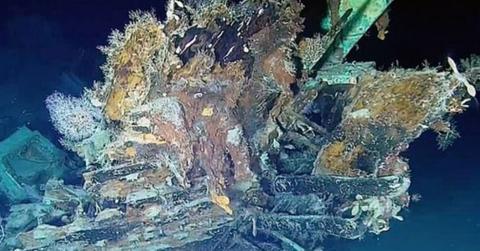Recovery of $17 Billion 'Holy Grail' Shipwreck of Titanic Proportions to Begin Despite Dispute Over Ownership

The San Jose sank after a conflict with the British.
A colossal historical find lies beneath the waves off the coast of Colombia, poised to rewrite the narrative of maritime archaeology.
The San José, a legendary “Holy Grail” shipwreck dubbed a "titanic" treasure trove, is anticipated to yield a wealth of artifacts worth billions, potentially initiating a modern-day gold rush in archaeological circles.
Director lhena Caicedo of the Colombian Institute of Anthropology and History describes the galleon as an enduring symbol of riches, lost to the depths in 1708 during the War of Spanish Succession off Baru Island, Cartagena, The Guardian reported.
Its rediscovery in 2015 unveiled a staggering bounty of emeralds, gold and silver estimated at an astonishing $17 billion.
The ownership of this maritime marvel has sparked contentious disputes among Spain, Colombia, Bolivian indigenous groups, and even the United States, each vying for a claim to its treasures.
However, amidst the political wrangling, Colombian authorities now pledge to set aside differences and commence salvage operations in April, focusing on uncovering historical and archaeological insights rather than mere riches.
Archaeologists and historians eagerly anticipate the revelations the San José may unveil about the zenith of the Spanish empire and its impact on Latin America.
Ann Coats, an associate professor of maritime heritage at the University of Portsmouth, underscores the significance of this endeavor, likening it to a quest for answers to myriad historical mysteries.
- 'Incredible Find': Florida Construction Workers Unearth 1800s Shipwreck While Digging up Highway
- Underwater Artifact: Scientists Race to Preserve Mysterious Shipwreck Found Along Canadian Coastline
- Dolce Discovery: Neolithic Ship Cargo, Ancient Artifacts Found in Italy Near Roman Emperor's Bathing Area
Yet, the expedition presents unprecedented challenges. Few vessels of such magnitude have ever been recovered, particularly from tropical waters.
Caicedo acknowledges the pioneering nature of their mission, highlighting the monumental task of preserving the wreck and its contents, submerged for over three centuries.
Complicating matters further is the wreck's inaccessible depth of 2,000 feet, necessitating innovative solutions.
Never miss a story — sign up for the Front Page Detectives newsletter. Be on the scene the moment news breaks.
Colombia's military is spearheading the development of state-of-the-art salvage robots, poised to undertake the daunting task of retrieving artifacts from the ocean floor, a venture estimated to cost over $4.5 million, CBS News reported.
Culture Minister Juan David Correa outlines plans for these automated submersibles to conduct initial reconnaissance, assessing the feasibility of raising items to the surface. This preparatory phase aims to inform subsequent salvage efforts, maximizing the chances of a successful recovery.
In a tantalizing glimpse of the treasures awaiting retrieval, footage captured by the Colombian Navy in 2017 showcases a trove of gold pieces, cannons and artifacts strewn across the ship's wreckage.
The upcoming expedition promises to be the most ambitious in history, representing a pivotal moment for maritime archaeology.
Become a Front Page Detective
Sign up to receive breaking
Front Page Detectives
news and exclusive investigations.
